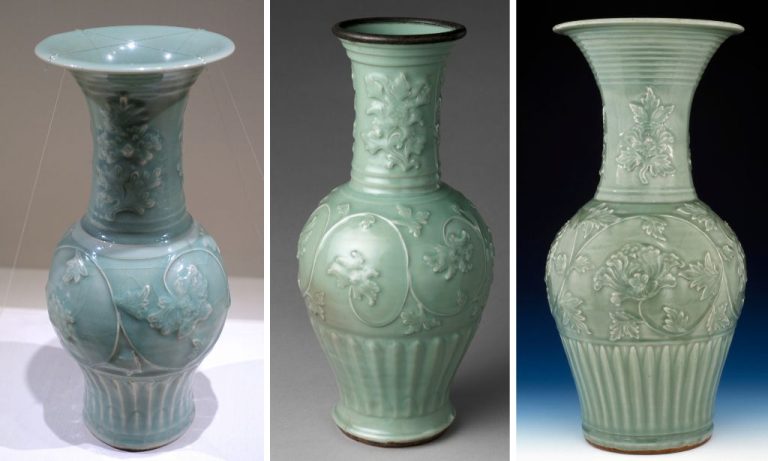Can Bongs Be Made Of Ceramic?
A bong, also known as a water pipe, is a filtration device used to smoke tobacco, herbs, or cannabis. It uses water to cool and filter the smoke before it is inhaled. Bongs are often made from glass, metal, ceramics, wood, or plastic.
Traditionally, bongs have been crafted from glass or acrylic. Glass allows for elegant, translucent designs while remaining highly durable and easy to clean. Acrylic plastic is affordable but less sturdy. More recently, ceramic bongs have risen in popularity due to their visually appealing look and feel as well as certain functional advantages over glass.
History of Ceramic Bongs
The origins of ceramic bong use can be traced back thousands of years to ancient cultures that crafted pipes and water pipes from clay materials. Ceramic and terra cotta were among the earliest materials used to create smoking devices due to their abundance and ease of shaping.
Ancient Middle Eastern, African, and Asian cultures are known for producing ceramic water pipes, particularly for smoking hashish, opium, and tobacco. There is archeological evidence of ceramic water pipe use dating back over 2000 years in regions like Mesopotamia, Persia, and Northern India. Intricately designed ceramic hookahs and chillums became an important part of social smoking traditions.
Notable examples of antique ceramic bongs and pipes include ornate hookahs from the Ottoman Empire in the 17th and 18th centuries, elegant opium pipes from 18th century China, and tribal pipes made by Indigenous Americans. Ceramic construction allowed artisans to shape creative pipe designs and decorate with colors, glazes, and paints.
Benefits of Ceramic Bongs
Ceramic bongs offer several advantages over glass or acrylic options. Here are some of the key benefits:
Durability and Longevity
One of the biggest perks of ceramic bongs is their durability. Ceramic is an incredibly strong material that can withstand drops and bumps that would easily shatter glass. The glazing process makes ceramic non-porous and resistant to scratches. With proper care, a ceramic bong can potentially last a lifetime.
Easy to Clean/Non-Porous
Ceramic’s non-porous nature also makes it very easy to clean. Resin and buildup wipe away smoothly from the glazed surface without soaking or harsh chemicals. You’ll never have to worry about stubborn stains or smells lingering in a ceramic piece.
Heat Resistance
Ceramic holds up well to repeated exposure to flame and high temperatures. It provides smooth, cool hits without transferring excess heat to the smoke. This steady temperature regulation helps preserve terpenes and flavors.
Artistic Versatility in Shapes and Decoration
One of ceramic’s biggest advantages is the vast creative potential. Clay can be sculpted into intricate shapes not possible with glass blowing. The colors and artistic effects achievable with glazes are limitless. This allows for truly unique and one-of-a-kind ceramic bong designs.
Downsides of Ceramic Bongs
While ceramic bongs have many benefits, they also come with some drawbacks to consider before purchasing. The two main downsides of ceramic bongs compared to glass are:
Heavier and Less Portable
Ceramic bongs tend to be thicker and heavier than glass, given the dense nature of clay and glaze materials. This makes ceramic bongs less ideal for transport compared to lightweight glass bongs. The extra weight also makes ceramic bongs prone to breaking if dropped.
Potential to Chip or Crack
Due to the brittle nature of fired clay, ceramic bongs can crack or chip if impacted against a hard surface. Glazes and decorations on the exterior are especially prone to chipping. This risk can be mitigated by handling the bong carefully, but any falls or accidents can result in permanent damage.
Difficult Cleaning of Porous Materials
The semi-porous nature of ceramic means smoke, resin, and ash can seep into small pores in the material. Intricate carved or pierced decorations on some ceramic bongs can trap residue requiring thorough cleaning. Glass bongs tend to have smoother, less porous surfaces that do not retain as much buildup.
Ceramic Material Options
Ceramic bongs can be made from various types of ceramic materials, each with their own properties and considerations for smoke safety. The most common options are stoneware, earthenware, and porcelain.
Stoneware is a durable, non-porous clay that can withstand high temperatures. It’s commonly used for baking dishes and mugs. When fired at high temperatures, stoneware forms a strong, watertight material that resists staining. This makes it a good choice for bong manufacturing. Stoneware bongs are less likely to hold smells or flavors over time.
Earthenware is a more porous type of clay that is fired at lower temperatures. It’s cheaper than stoneware but also more delicate. The porous nature means earthenware can absorb smells and stains over time. Earthenware bongs require more careful cleaning and maintenance. The porosity also raises potential health concerns about bacteria growth.
Porcelain is a premium ceramic made from refined clay and fired at very high temperatures. It has a smooth, glass-like surface that resists staining and odors. Porcelain bongs are sturdy, non-porous, and ideal for smoke safety. However, porcelain is also the most expensive ceramic option.
When selecting a ceramic material for bong manufacturing, porcelain and stoneware tend to be better choices than earthenware. The non-porous nature resists bacteria growth and provides a smooth, sturdy surface that won’t degrade over time. This results in a safer, longer-lasting bong.
Manufacturing Ceramic Bongs
Ceramic bongs are created through a variety of manufacturing processes that shape the clay, decorate the surface with color, and permanently harden the material through high temperature firing. While some mass-produced ceramic bongs are made in molds, most quality ceramic bongs are shaped individually by hand on a pottery wheel in a process known as “wheel throwing.” This gives the artist maximum control and allows for intricate, asymmetrical, organic shapes. The walls of ceramic bong tubes and chambers are carefully thinned and smoothed to create sleek curves and hollow forms.
Once shaped, ceramic bongs are often decorated using glazes – specialized paint-like coatings that melt and fuse with the clay surface during firing in a kiln. Glazes come in endless colors and effects like gloss, matte, crystalline, or crackled. Skilled ceramic artists are able to create stunning original designs like fades, gradients, landscapes, animals, and more using multiple glazes on a single piece. The glazed ceramic is fired in a kiln at over 2,000°F to permanently harden and set the clay and glazes. Firing a handmade ceramic bong is an art in itself, requiring careful control of temperatures and atmosphere to avoid defects.
Unlike mass-produced glass bongs, individually handcrafted ceramic bongs showcase true artistic craftsmanship and one-of-a-kind artistry. Each piece is shaped and decorated with meticulous care and attention. No two handmade ceramic bongs are ever exactly alike.
Care and Maintenance
Ceramic bongs require a bit more care and maintenance than glass or acrylic bongs to keep them looking their best. Here are some tips for proper cleaning and handling:
For cleaning, avoid abrasive sponges or scrubbers as they can scratch the delicate ceramic surface. Instead, use a soft cloth or cotton swabs dampened with warm water or iso alcohol to gently wipe away residue. Pay close attention to crevices and percolators, using pipe cleaners or cotton swabs to remove any built up gunk or ash.
To prevent hard water stains, dry your ceramic bong thoroughly after cleaning. Letting water sit in crevices can lead to calcium and mineral deposits over time. You can use distilled or filtered water to help minimize this.
One of the drawbacks of ceramic is its fragility, so handle your bong gently to avoid cracks or chips. Avoid tapping or knocking it against hard surfaces. When transporting, wrap it carefully or use a protective case. Applying a sealant glaze can help strengthen it.
With proper care and maintenance, a ceramic bong can remain beautiful and functional for years. Gentle cleaning and handling will keep it looking as vibrant as the day you bought it.
Notable Ceramic Bong Artists
Ceramic bongs have been gaining popularity in recent years as both functional smoking devices and objets d’art. Skilled ceramic artists from around the world have made a name for themselves by sculpting unique and visually stunning ceramic bongs. Here are some of the most well-known ceramic bong artists and their signature styles:
Jerome Baker is one of the most influential ceramic bong artists, known for his colorful designs and sculpted shapes. His bongs often feature fantastical creatures, geometric patterns, and imaginative motifs. Baker helped pioneer the art of ceramic bong-making in the 1990s.
Banjo is an Australian ceramic artist specializing in nature-inspired functional art bongs. His pieces incorporate leafy green glazes, wooden components, and earthy asymmetric shapes emulating plants and rock formations. Banjo’s bongs blend rustic and refined visual elements.
Kathy Gallo creates hand-sculpted animal-shaped bongs with incredible attention to detail. Her lifelike ceramic turtles, elephants, puffer fish, bears, and other creatures transform into smoking apparatuses while retaining their realistic fauna aesthetics.
Scott Deppe is known for his ceramic wizard bongs inspired by medieval and fantasy themes. His handcrafted pieces often depict wise magic-users amid runic symbols and magical landscapes. Deppe’s bongs exhibit incredible technical skill in ceramic sculpting and glazing.
These artists exemplify the creativity and craftsmanship possible with ceramic bong artistry. Their custom works elevate functional glassware into the realm of fine art. Ceramic bongs allow artists to merge both form and function into stunning symbolic sculptures.
Ceramic Bong Design Possibilities
One of the most exciting aspects of ceramic bongs is the wide range of design possibilities available. Ceramic’s versatility allows for immense creativity in colors, shapes, and decoration techniques.
Ceramic bongs can come in any color imaginable. Bright solids, marbled patterns, metallic lusters – the options are endless. Glazes and underglazes provide a vast palette for artists to work with. Ceramicists also have full control over gradients, fades, and color combinations.
Unique shapes and sculptural profiles set ceramic bongs apart. While glass tends to be limited to sleek, rounded forms, ceramic can take on more organic, asymmetrical shapes. From swirling, biomorphic profiles to faceted geometrics, ceramic allows for incredible freedom of form. Sculptural details like facets, curves, and indentations further enhance visual interest.
A plethora of decorative techniques add ornate embellishments. Impressed textures, carved patterns, and pierced perforations create intricate designs. Strategic applications of glaze result in drips, runs, and color variations that make each piece one-of-a-kind. Additionally, hand-painting with underglazes offers limitless custom motifs.
This unparalleled versatility enables complete personalization and customization. No two ceramic bongs are quite the same. Artists can craft bespoke pieces tailored to an individual’s preferences. Custom colors, shapes, themes, and details allow each bong to feel completely unique. This artistic freedom makes ceramic bongs truly special.
Conclusion
In summary, ceramic bongs offer a unique smoking experience with both advantages and disadvantages compared to glass or plastic bongs. The porous nature of ceramic can provide a smooth, cooled hit, while the fragility requires more careful handling. Ceramic allows for beautiful artistic creations, but costs more than mass-produced glass. Overall, ceramic bongs present cannabis enthusiasts an alternative to mainstream options, with the potential for custom artwork and subtler functionality differences. As with any smoking device, maintenance and safety remains important. For those seeking an artful, personalized smoking vessel, or who appreciate the tradition of ceramic craftsmanship, ceramic bongs offer aesthetic and experiential appeal.


